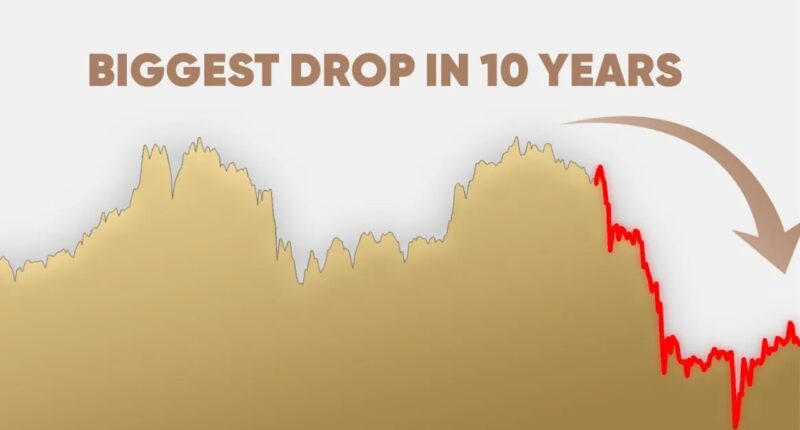After a spectacular nine-week rally that pushed prices to successive all-time highs, the gold market is finally catching its breath. The precious metal is on track for its first weekly loss since May, declining roughly 3% to trade around $4,118 per ounce. This marks the most significant weekly drop in over four months, prompting investors to ask a critical question: is this the start of a crash or a strategic buying opportunity?
The recent downturn appears to be driven by a confluence of three primary factors, with technical indicators taking the lead.
1. A Technically-Driven Pause
The most immediate cause is a classic technical correction. Gold had entered what analysts call “overbought” territory after a relentless surge of over 50% year-to-date. Such parabolic rises are often unsustainable in the short term, and a pullback becomes almost inevitable as traders take profits. As noted in a recent analysis by Reuters, the rally had shown signs of exhaustion, with momentum indicators flashing warnings that a cooldown was likely. This is a normal and healthy part of any asset’s price discovery cycle, especially after such a historic run.
2. A Resurgent U.S. Dollar and Shifting Rate Expectations
Gold, which is priced in U.S. dollars, has an inverse relationship with the currency. A stronger dollar makes gold more expensive for holders of other currencies, dampening demand. Recently, the U.S. Dollar Index (DXY) has found some footing, creating headwinds for bullion. Furthermore, market expectations for the timing and pace of interest rate cuts by the Federal Reserve are being recalibrated. Higher interest rates typically strengthen the dollar and increase the opportunity cost of holding non-yielding assets like gold. For a deeper dive into how Fed policy impacts gold, the World Gold Council provides excellent educational resources and regular market commentary.
3. A Calmer Geopolitical Climate (For Now)
Gold’s recent ascent was supercharged by its role as a safe-haven asset during periods of geopolitical uncertainty. While global tensions haven’t vanished, there has been a slight de-escalation in certain hotspots, leading to a minor reduction in immediate flight-to-safety bids. This temporary calm has allowed other market drivers, like the dollar and yields, to take center stage.
Domestic Markets Follow Suit
The correction was not isolated to international markets. In India, domestic gold and silver prices mirrored the global weakness. MCX December gold futures traded 1% lower, settling around ₹1,23,222 per 10 grams, while silver saw a steeper decline of 1.5% to approximately ₹1,46,365 per kg.
Crash or Buying Opportunity? Analysts Weigh In
So, what does this mean for the future? Most market experts view this not as the beginning of a crash, but as a necessary and healthy consolidation.
“The bull market for gold is not over; it’s just taking a well-deserved break,” said one market strategist. “This pullback offers a more attractive entry point for investors who missed the initial rally. The fundamental drivers—including central bank buying, persistent inflation concerns, and a still-uncertain economic outlook—remain largely intact.”
In essence, the long-term narrative for gold still appears supportive. This week’s decline may be a welcome development for bulls, potentially setting the stage for the next leg up once the market absorbs these technical pressures. For investors, the key will be to watch the U.S. Bureau of Labor Statistics for upcoming inflation data and monitor Federal Reserve communications for clearer signals on the future path of interest rates










